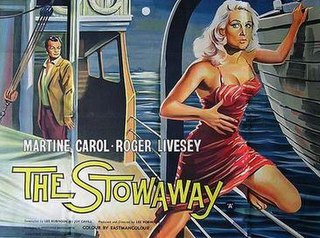Related Research Articles

Albert Namatjira was an Arrernte painter from the MacDonnell Ranges in Central Australia, widely considered one of the most notable Australian artists. As a pioneer of contemporary Indigenous Australian art, he was arguably one of the most famous Indigenous Australians of his generation. He was the first Aboriginal artist to receive popularity from a wide Australian audience.

Captain Sir William Alexander Dargie was a renowned Australian painter, known especially for his portrait paintings. He won the Archibald Prize, Australia's premier award for portrait artists on eight separate occasions; a record held since 1952.
The Hermannsburg School is an art movement, or art style, which began at the Hermannsburg Mission in the 1930s. The best known artist of the style is Albert Namatjira. The movement is characterised by watercolours of western-style landscapes that depict the often striking colours of the Australian outback.

Peter Benjamin Graham was an Australian visual artist, printer, and art theorist.
Stanley Gilbert Hawes MBE, was a British-born documentary film producer and director who spent most of his career in Australia, though he commenced his career in England and Canada. He was born in London, England and died in Sydney, Australia. He is best known as the Producer-in-Chief (1946–1969) of the Australian Government's filmmaking body, which was named, in 1945, the Australian National Film Board, and then, in 1956, the Commonwealth Film Unit. In 1973, after he retired, it became Film Australia.
The Phantom Stockman is a 1953 Australian western film written and directed by Lee Robinson and starring Chips Rafferty, Victoria Shaw, Max Osbiston and Guy Doleman.
Lee Robinson was an Australian producer, director and screenwriter who was Australia's most prolific filmmaker of the 1950s and part of the creative team that produced the late 1960s international hit television series Skippy the Bush Kangaroo.
William Townsend Onus Jnr was an Aboriginal Australian political activist, designer, and showman, also known for his boomerang-throwing skills. He was father of artist Lin Onus.

The Siege of Pinchgut is a 1959 British thriller filmed on location in Sydney, Australia, and directed by Harry Watt. It was the last film produced by Ealing Studios, and was entered into the 9th Berlin International Film Festival where it was nominated for the Golden Bear Award.
Namatjira may refer to:

The Stowaway is a 1958 French-Australian film directed by Australian director Lee Robinson and French Lebanese director Ralph Habib. It was shot on location in Tahiti and is one of the few Australian financed movies of the 1950s, although the storyline has nothing to do with Australia.
The Pearlers is a 1949 documentary film from director Lee Robinson about the pearling industry off the coast of Broome. Robinson later used a similar background for his feature King of the Coral Sea (1954).
Outback Patrol is a 1952 documentary about the patrol of a policeman in the Northern Territory outback, Constable Robert Darkin, and the various tasks he must perform. The movie has since become a study text in Australian secondary schools. Robinson said it "was a very successful picture."
Double Trouble is a docu-drama directed by Lee Robinson about two Australian men intolerant of foreign migrants who find themselves transported to a foreign country.
The Namatjira Project is an Australian community cultural development project, launched in 2009, conducted by arts and social change company Big hART. It is based in the Aboriginal communities of Hermannsburg (NT) and Alice Springs in the Northern Territory of Australia. Its focus is the life and work of the late Albert Namatjira, an Arrernte watercolour landscape artist. The project undertakes community work and has developed an award-winning touring theatre show, Namatjira, which depicts "the commercial appropriation of Aboriginal experience".
Bush Policemen is a 10-minute Australian documentary about the work done by a policeman in the Australian Outback. It was released to cinemas as a supporting feature. Robinson said it was "really the story of a river operating policeman."
Darwin: Gateway to Australia is a 1946 Australian documentary. It was one of a series of documentaries made in the Northern Territory by Lee Robinson.
Genevieve Lacey is an Australian musician and recorder virtuoso, working as a performer, creator, curator and cultural leader. The practice of listening is central to her works, which are created collaboratively with artists from around the world. Lacey plays handmade recorders made by Joanne Saunders and Fred Morgan. In her collection, she also has instruments by David Coomber, Monika Musch, Michael Grinter, Paul Whinray and Herbert Paetzold.
Vincent Namatjira is an Aboriginal Australian artist living in Indulkana, in the Anangu Pitjantjatjara Yankunytjatjara in South Australia. He has won many art awards, and after being nominated for the Archibald Prize several times, he became the first Aboriginal person to win it in 2020. He is the great-grandson of the Arrente watercolour artist Albert Namatjira.
Winnie Bamara was the first Indigenous Australian woman artist to paint in a European realist style. Her ability to paint scenes accurately and solely from memory attracted wide attention in the 1950s. She was hailed as a "female Albert Namatjira".
References
- ↑ 'Occasional Paper No. 49 TENTH ERIC JOHNSTON LECTURE 1995: Lost Conversations, Recovered Archives' By Roslyn Poignant
- ↑ ""HERALD" WEEK-END MAGAZINE Filming the life of Australia's famous aboriginal artist — Suggestion for approaching Mr. Chifley with a low bow — The wreek of the malabar, Easter 1931". The Sydney Morning Herald . National Library of Australia. 29 March 1947. p. 10. Retrieved 30 August 2015.
- ↑ Namatjira the Painter (1947) at Moving History: 60 Years of Film Australia. Retrieved 16 December 2011
- ↑ Robinson, Lee (15 August 1976). "Lee Robinson" (Oral history). Interviewed by Graham Shirley. National Film and Sound Archive.
- ↑ Geoff Mayer, 'Lee Robinson (1923 – 2003)', Screening the Past 30 April 2004
- ↑ 'Film Australia's Outback DVD: Interview with Lee Robinson' Archived 22 February 2012 at the Wayback Machine
- ↑ Lee Robinson interview with Albert Moran, Continuum: The Australian Journal of Media & Culture vol. 1 no 1 (1987)